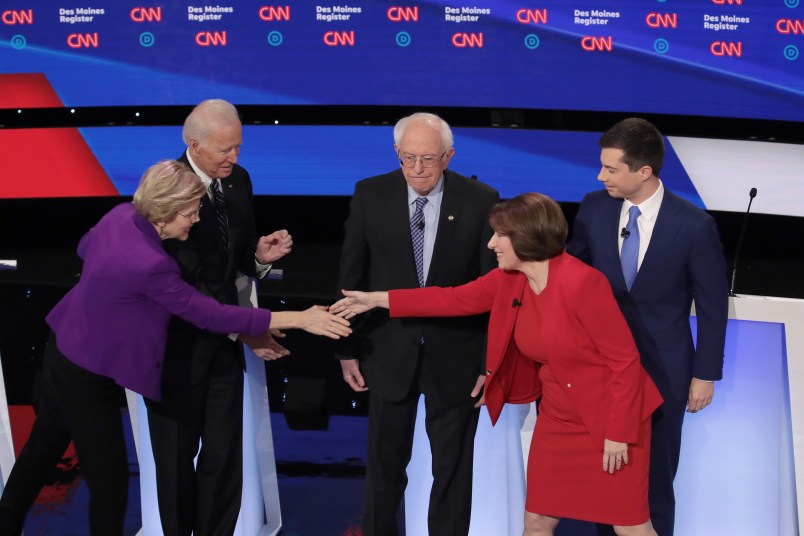The New York Times editorial board threw its weight behind both Sens. Elizabeth Warren (D-MA) and Amy Klobuchar (D-MN), breaking from the traditional one-candidate endorsement to argue that both women are the most effective standard bearers for their wings of the party.
For Warren, the board members praise her detailed policy positions and paint her as a more unifying messenger for the progressive agenda than Sen. Bernie Sanders (I-VT), who they liken to President Donald Trump in his divisiveness and reluctance to compromise.
They also acknowledge the difficulty in Warren’s path to the nomination, but argue that her various surges in the polls show that there is room for base growth if she can broaden her message from solely blaming the big business boogeyman.
For Klobuchar, the editors highlight her history of bipartisan effectiveness in the Senate and intense popularity in places where she has high name recognition (read: her home state of Minnesota where she time and time again cruised to reelection).
They admit that reports of her staff abuse is worrying, and advise her to polish her political messaging to get it on par with that of figures accustomed to the national spotlight.
They disregard the other candidates, including the frontrunners, for a variety of reasons: South Bend Mayor Pete Buttigieg is too green, former Vice President Joe Biden doesn’t promise enough change, tech entrepreneur Andrew Yang is too inexperienced, billionaire Mike Bloomberg skipped the interview citing a lack of positions, Sanders is rigid and polarizing.
The editors conclude that the responsibility for picking between the endorsed candidates will lie with Democratic voters, who they say have been “itching” to have the moderate-progressive fight since 2016.







The primary process will resolve this.
And it might not be either one of these.
I tried endorsing two women at the same time many years ago. Kinda tricky.
As candidates, that’s fine.
As spouses or partners, could be problematic…
Now I can die peacefully.
I’d love to know how influential an NYT endorsement is today compared to, say, 1983.